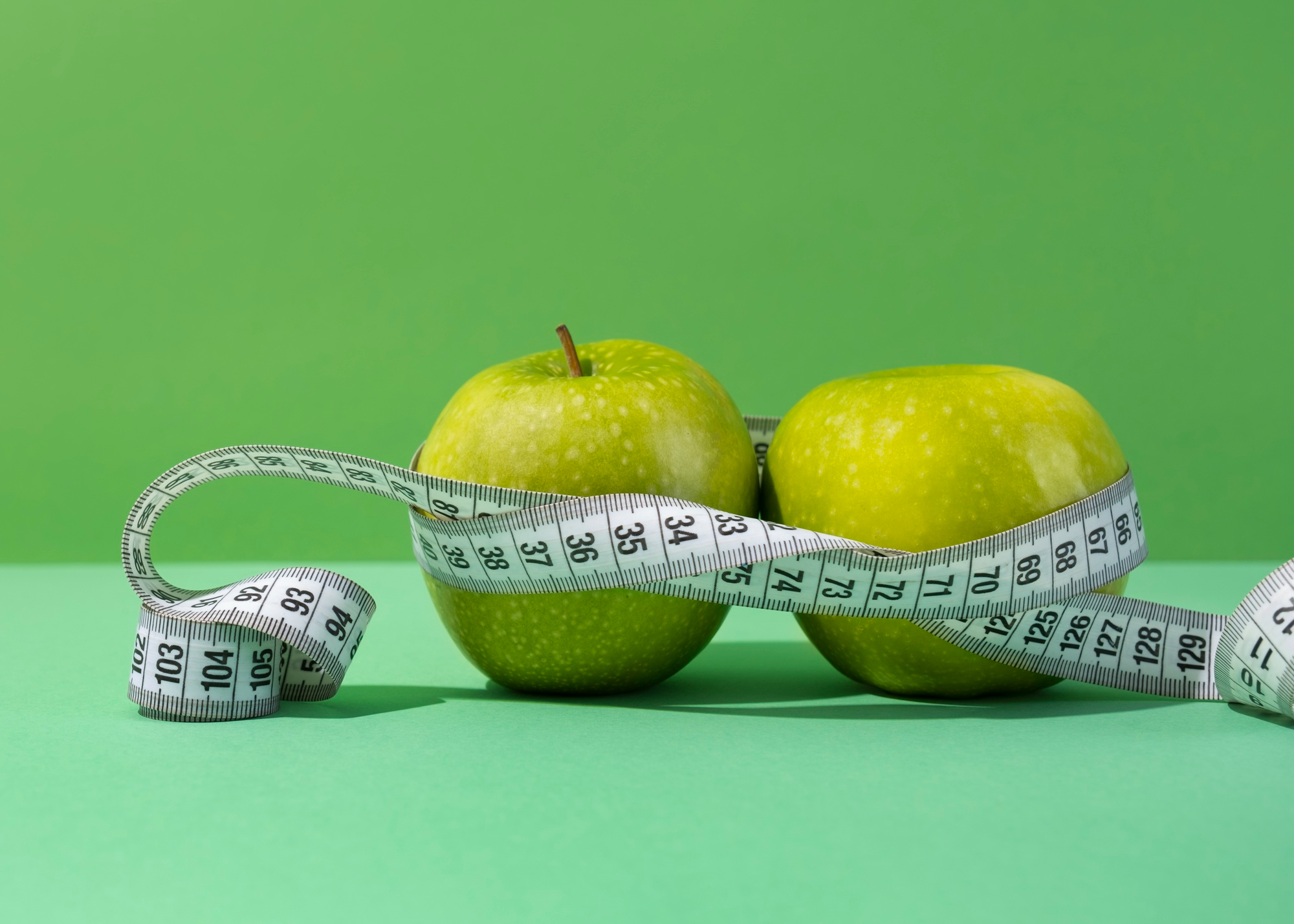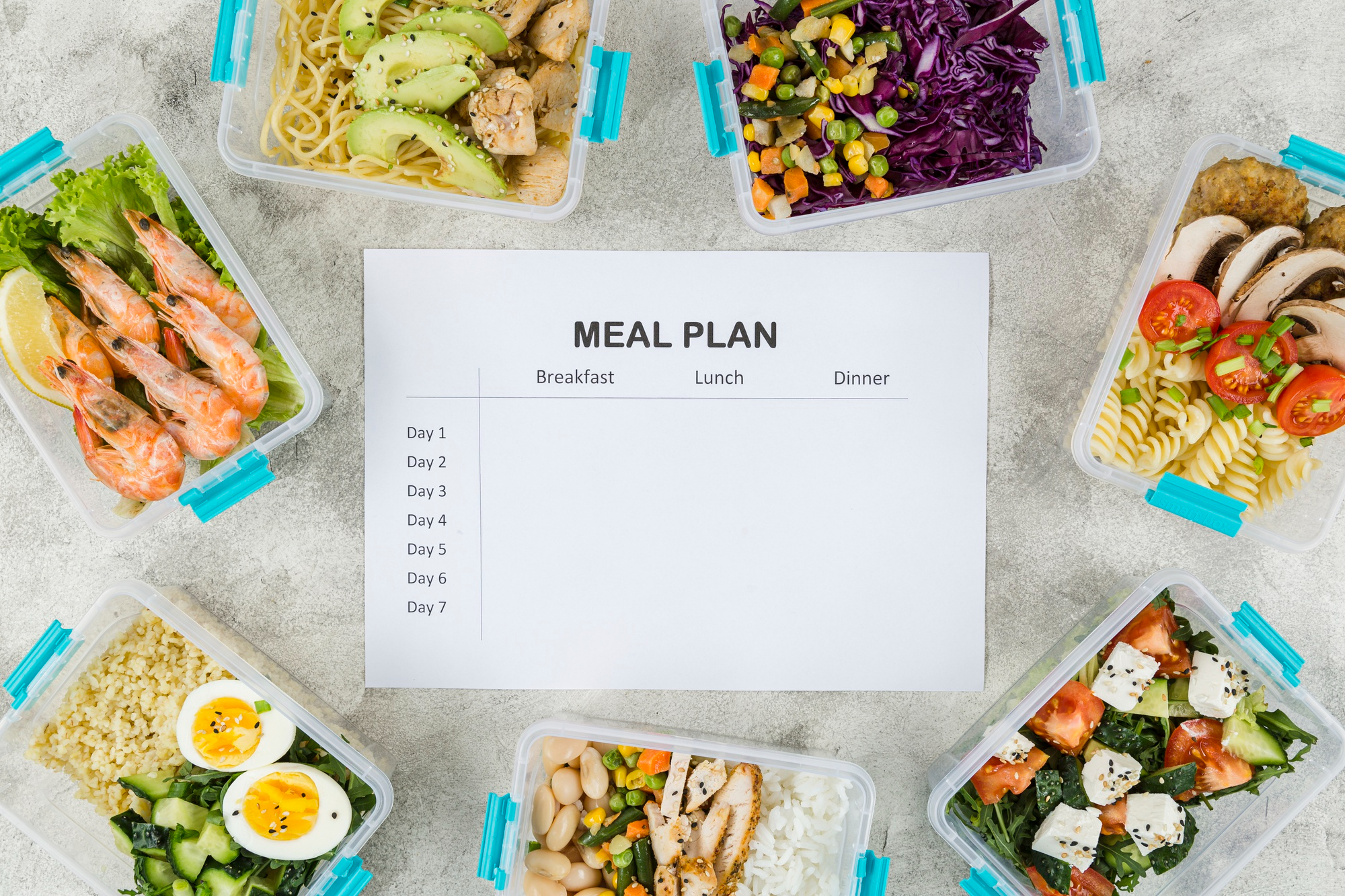
How to Lose Weight with Plan Our Meals
Losing weight is simple in theory. All you really need to do is eat less calories than your body requires. That's it, end of blog, thanks for reading.
Achieving that is easier said than done. It often requires you to be ultra focussed on that one goal to the point that you become obsessed. This may cause you to cut out things that bring you joy like spending time with friends.
In this blog post I'm going to walk you through how to lose weight, how to make it easier, and how Plan Our Meals can help you lose weight in a healthy, sustainable way.
1. Determine Your Caloric Needs
The first paragraph was a bit tongue in cheek, but it is true. So how do you eat less calories than your body requires? The first step is knowing how many calories your body requires. Here's how to work it out.
- Calculate Your Basal Metabolic Rate (BMR): This is the number of calories your body needs at rest. Various online calculators like this one can estimate your BMR based on your age, gender, weight, and height.
- Account for Activity Level: Multiply your BMR by an activity factor to account for physical activity. Sedentary individuals multiply by 1.2, while very active individuals multiply by 1.9.
For example, if your BMR is 1,764 calories and you are moderately active (activity factor of 1.55), your total daily energy expenditure (TDEE) is:
TDEE = 1764 × 1.55 = 2734 calories/day
2. Maintain a Caloric Deficit
To lose weight, aim for a moderate caloric deficit. A deficit of 500 calories per day is typically recommended, leading to a safe weight loss of about half a kilo per week. If you've got a lot of weight to lose you can probably increase this a little bit. If you've only got a kilo or two to lose it would be worth reducing this to transition back to your normal calorie requirements.
Using the previous example with a TDEE of 2,734 calories:
- For a 500 calorie deficit: 2,734 - 500 = 2,234 calories/day
Plan Our Meals can make this easy by automatically planning all your meals and snacks to help you hit this critical target.
3. Achieve an Appropriate Macronutrient Ratio
Macronutrients—proteins, fats, and carbohydrates—play crucial roles in your body. Getting an appropriate amount of each for your goals can make achieving them feel easier.
Protein
Adequate protein intake is essential as it plays a critical role in repairing and building muscle tissue. This is even more important if you're trying to lose weight because I'm sure you would rather keep the muscle you've worked hard to build and only lose fat.
Protein also helps you feel full for longer which will make it easier to stick to those calorie goals. On top of this, a higher protein intake can boost your metabolism as your body uses more energy to digest protein compared to fats and carbohydrates (thermic effect of food).
So how much protein should you eat? It is generally recommended that you eat somewhere in the range of 1.6g to 2.2g of protein per kilogram of lean body mass if you're trying to lose weight or gain muscle. We recommend using lean body mass instead of total body mass because if you've got a high body fat percentage, a simple body weight ratio could significantly overestimate how much protein you should be eating.
So, let’s take a look at what the scenario above would look like. You weigh 80kg and have a bodyfat percentage of 20%. You want to lose weight whilst maintaining muscle so you select a protein intake of 2.2g per kg of lean body mass. Here’s the steps you would take to calculate your protein intake.
- 80kg x (1 – 0.2) = 64kg
- 64kg x 2.2g = 141g
We can then work out how much this is as a percentage of the calories we calculated earlier.
- (141g x 4g/cal) / 2234cal = 25%
This means, for the scenario above, 25% of your calories should come from protein. Let's take a look at fats now.
Fats
Healthy fats play an important role in hormone production and satiety. They also help your body absorb fat-soluble vitamins such as A, D, E and K. They generally taste really good as well so including them can make hitting those calorie targets feel easier.
The World Health Organization recommends getting 20-35% of total calories from fat. The 20% minimum aims to help you get an appropriate amount of essential fatty acids whilst the 35% maximum tries to limit your total intake of saturated fats (the bad kind).
Before we decide what your ideal fat intake would be we’re going to discuss carbohydrates.
Carbohydrates
Carbs are your body's primary energy source. They easily break down into glucose which is what your muscles and brain consume throughout the day. If you get enough carbohydrates then your body doesn’t need to try and convert protein into a useable energy source, leaving it to do what we want it to do, repair and create new muscle.
Carbohydrates, especially in the form of whole grains and fruits and vegetables also provide dietary fibre which aids in digestion, helps maintain bowel health and can contribute to satiety.
Putting them all together
So how should you split your remaining calories between fats and carbohydrates? We suggest that the more active you are, the more carbohydrates you should eat. In our previous calculations we assumed an 80kg male who is moderately active. Let’s assume this means he lifts weights 3 times a week (hence the higher protein intake) and goes for a run on the other days.
Because he is exercising every day we would suggest a fat intake on the lower end of the range, we’ll go with 25% in this instance. This leaves 50% of the calories coming from carbohydrates.
4. Be Consistent
Consistency is key to successful weight loss. Here’s how to maintain it:
- Plan Your Meals: Plan and prepare your meals in advance to ensure they meet your caloric and macronutrient goals.
- Eat a balanced diet: If you didn’t notice, every macronutrient we discussed above plays a role in satiety and plays an important role in keeping your body functioning at it’s best.
- Regular Exercise: Incorporate regular physical activity that you enjoy. Aim for a mix of cardio and strength training. These help with cardiovascular health and maintaining muscle as you lose fat.
- Monitor Progress: Regularly check your weight and body measurements, but avoid daily weigh-ins to prevent frustration from natural fluctuations.
- Stay Hydrated: Drinking enough water helps with metabolism and satiety.
- Sleep Well: Aim for 7-9 hours of sleep per night, as poor sleep can hinder weight loss.
- Adjust as Needed: As you lose weight the total calories you need changes. This could be because you’ve lost weight and now need less calories or because losing weight has resulted in you enjoying exercise a lot more and you now need more calories. Either way, your ideal macronutrient ratio has likely changed over the journey.
Conclusion
Losing weight involves more than just cutting calories; it requires a balanced approach that includes maintaining a caloric deficit, achieving a suitable macronutrient ratio, and being consistent with your efforts. By understanding your body's needs and making informed choices, you can achieve sustainable weight loss and improve your overall health.
Plan Our Meals is a great way to help you achieve this. It takes the stress and effort out of trying to maintain a calorie deficit and appropriate macronutrient ratios. Click the button below to try it for free, no credit card required.
Remember, patience and persistence are essential — focus on long-term progress rather than quick fixes.

Why I Created "Plan Our Meals": A Meal Planning Website for Couples and Families
by James AndersonWhen I set out to create "Plan Our Meals," my goal was to design a meal planning website that would make life easier and healthier for couples and families. As someone who has experienced the challenges of meal planning firsthand, I...
Read More
How to get the most out of Plan Our Meals
by James AndersonHere are five steps to help you get the most out of Plan Our Meals
Read More
Understanding Decision Fatigue: Why Making Choices Can Wear You Down
by James AndersonYou’ve likely heard the term before, but what exactly is decision fatigue, and how does it impact your daily life?
Read More